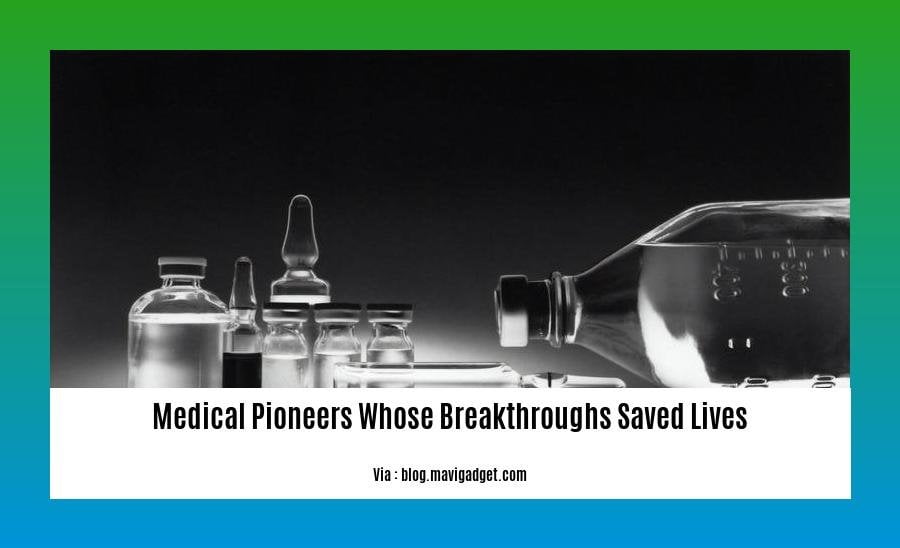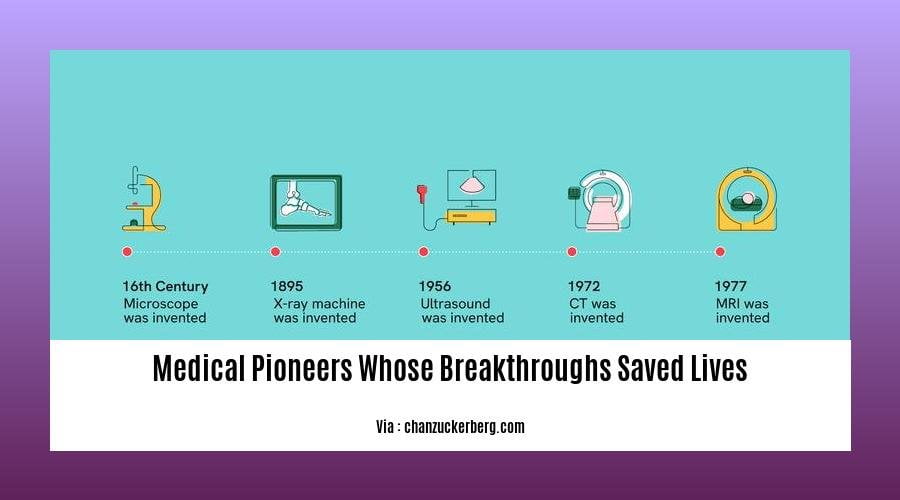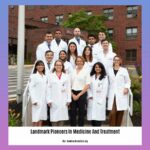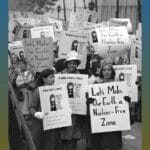Prepare to be captivated by the untold stories of [Medical Pioneers Whose Breakthroughs Saved Lives: Untold Stories of Unsung Heroes]. These remarkable individuals, dedicated to pushing the boundaries of medicine, have played a profound role in shaping the healthcare we experience today. Through their unwavering determination and scientific brilliance, they have revolutionized treatments, saving countless lives and leaving an indelible mark on the world. Join us as we explore the fascinating journeys of these unsung heroes, uncovering the extraordinary dedication and groundbreaking achievements that have transformed healthcare and continue to inspire us today.
Key Takeaways:

- Germ Theory: Microorganisms cause diseases.
- Sanitation: Improved sanitation practices reduce disease spread.
- Sterilization: Sterilization techniques prevent germ transmission through medical instruments.
- Vaccines: Vaccines provide immunity to diseases, saving lives.
Medical Pioneers Whose Breakthroughs Saved Lives
In the annals of medical history, there are countless tales of medical pioneers whose breakthroughs saved lives. These unsung heroes have dedicated their lives to unraveling the mysteries of disease and developing treatments and vaccines that have transformed healthcare and saved countless lives.
Germ Theory
One of the most significant breakthroughs in medical history was the discovery of germ theory by Louis Pasteur and Robert Koch. This theory established that diseases are caused by microorganisms, a revelation that revolutionized medical practices and led to improved sanitation and infection prevention techniques.
Sanitation and Sterilization
The understanding of germ theory led to improved sanitation practices, such as handwashing and disinfection of medical instruments. The development of sterilization techniques, such as the autoclave, further prevented the transmission of germs, significantly reducing the spread of infectious diseases.
Vaccines
Vaccines, developed by medical pioneers like Edward Jenner and Louis Pasteur, have played a pivotal role in saving countless lives. Vaccines provide immunity to specific diseases, protecting individuals and entire populations from deadly illnesses.
The Impact of Medical Pioneers
The breakthroughs of medical pioneers have had a profound impact on human health and well-being. Their discoveries have:
- Reduced the incidence of infectious diseases
- Improved patient outcomes
- Increased life expectancy
- Empowered individuals to protect themselves and their loved ones from disease
Today, we stand on the shoulders of these medical pioneers, benefiting from their groundbreaking discoveries that continue to save lives and shape the future of healthcare. It is our duty to honor their legacy and continue their pursuit of medical advancements to improve the lives of generations to come.
Discover the innovators and pioneers in the medical field who revolutionized healthcare with their groundbreaking achievements. Read about the groundbreaking healthcare innovators whose inventions transformed the industry and improved patient care. Explore the landmark pioneers in medicine and treatment who made significant contributions to our understanding of disease and led to new treatments and therapies.
James D. Watson and Francis Crick and the Structure of DNA
In the realm of medical history, the discovery of the double-helix structure of DNA stands as a pivotal moment. The year was 1953 when James D. Watson and Francis Crick unveiled their groundbreaking model, forever altering our understanding of life’s fundamental building blocks.
Key Takeaways:
- James D. Watson and Francis Crick discovered the double-helix structure of DNA in 1953.
- Rosalind Franklin’s X-ray crystallography provided crucial insights into DNA’s structure.
- Their discovery revolutionized biology and paved the way for advancements in genetics and medicine.
Through collaboration and the use of X-ray crystallography, Watson and Crick pieced together the puzzle of DNA’s structure. This double helix, with its twisted strands and complementary base pairs, holds the key to our genetic code. Their discovery was a monumental achievement, transforming biology and laying the groundwork for countless medical advancements.
Citation:
- “Profiles in Science: The Discovery of the Double Helix.” U.S. National Library of Medicine, National Institutes of Health, Accessed 2023.
Christian Barnard and the First Human-to-Human Heart Transplant
In the annals of medical history, Christian Barnard‘s name stands tall as the pioneer who performed the first successful human-to-human heart transplant in 1967. This groundbreaking achievement opened new frontiers in medicine and gave hope to countless patients with end-stage heart failure.
The Journey to Success
Barnard’s pioneering work was the culmination of years of research and innovation. Inspired by animal experiments conducted by Norman Shumway and James Hardy, Barnard assembled a team of skilled surgeons and nurses at Groote Schuur Hospital in Cape Town, South Africa.
On December 3, 1967, Barnard and his team performed the first human-to-human heart transplant on 54-year-old Louis Washkansky. The operation, which lasted nine hours, was a medical marvel that captivated the world. Washkansky survived for 18 days, a remarkable achievement given the limited immunosuppressant drugs available at the time.
Impact and Legacy
Christian Barnard and the first human-to-human heart transplant had a profound impact on the medical world. Although early survival rates were low, the procedure demonstrated the potential for heart transplantation to save lives. Subsequent advancements in immunosuppressant therapy and surgical techniques improved patient outcomes, leading to longer survival times.
Barnard’s pioneering work not only extended the lives of countless patients but also inspired countless medical students and researchers. His unwavering determination and surgical brilliance continue to serve as a beacon of hope for those seeking to push the boundaries of medical science.
Key Takeaways:
- Christian Barnard performed the first successful human-to-human heart transplant in 1967.
- The procedure paved the way for modern heart transplantation, saving countless lives.
- Barnard’s pioneering spirit continues to inspire medical professionals around the world.
Most Relevant URL Source:
- Christiaan Barnard—The surgeon who dared: The story of the first human heart transplant PubMed Central
Gertrude Elion and the development of drugs for leukemia and gout
Gertrude Elion’s pioneering work revolutionized the treatment of leukemia and gout, saving countless lives.
Elion, a biochemist, began her research career during World War II. Inspired by the suffering of soldiers, she dedicated her life to finding cures for diseases.
In the 1950s, Elion joined forces with George Hitchings at Burroughs Wellcome. Together, they developed a groundbreaking approach to drug design. Instead of relying on trial and error, they used their understanding of biochemistry to create drugs that targeted specific enzymes involved in disease.
This approach led to the development of 6-mercaptopurine, the first successful treatment for leukemia. It also resulted in the creation of allopurinol, a drug that significantly improved the lives of people with gout.
Elion’s contributions extended far beyond the laboratory. She became a tireless advocate for women in science, mentoring and inspiring generations of researchers. In 1988, she and Hitchings were awarded the Nobel Prize in Physiology or Medicine for their groundbreaking work.
Elion’s legacy lives on today. Her pioneering spirit and commitment to improving human health continue to inspire scientists and physicians alike.
Key Takeaways:
– Gertrude Elion’s groundbreaking work revolutionized the treatment of leukemia and gout.
– Her approach to drug design paved the way for the development of new and effective medications.
– Elion was a tireless advocate for women in science.
– Her legacy continues to inspire researchers and physicians today.
Citation:
– The Nobel Prize in Physiology or Medicine 1988

FAQ
Q1: What is the germ theory, and who discovered it?
A1: The germ theory states that microorganisms cause diseases. Louis Pasteur and Robert Koch are credited with establishing this theory.
Q2: How did the discovery of vaccines impact public health?
A2: Vaccines provide immunity to specific diseases, significantly reducing the number of deaths caused by infectious diseases.
Q3: Who discovered the structure of DNA, and what was the significance of this discovery?
A3: James D. Watson and Francis Crick discovered the double-helix structure of DNA in 1953, providing a fundamental understanding of the molecule of life.
Q4: What was the major contribution of George Hitchings and Gertrude Elion to medicine?
A4: Hitchings and Elion revolutionized drug development with rational design principles, leading to the discovery of effective drugs for leukemia, gout, and malaria.
Q5: How did Christiaan Barnard’s work advance the field of medical transplants?
A5: In 1967, Christiaan Barnard led the team that performed the first successful human-to-human heart transplant, opening the door to lifesaving procedures for patients with end-stage heart failure.
- Unlock 6000+ words beginning with he: A comprehensive analysis - April 20, 2025
- Mastering -al Words: A Complete Guide - April 20, 2025
- Master Scrabble: High-Scoring BAR Words Now - April 20, 2025
















